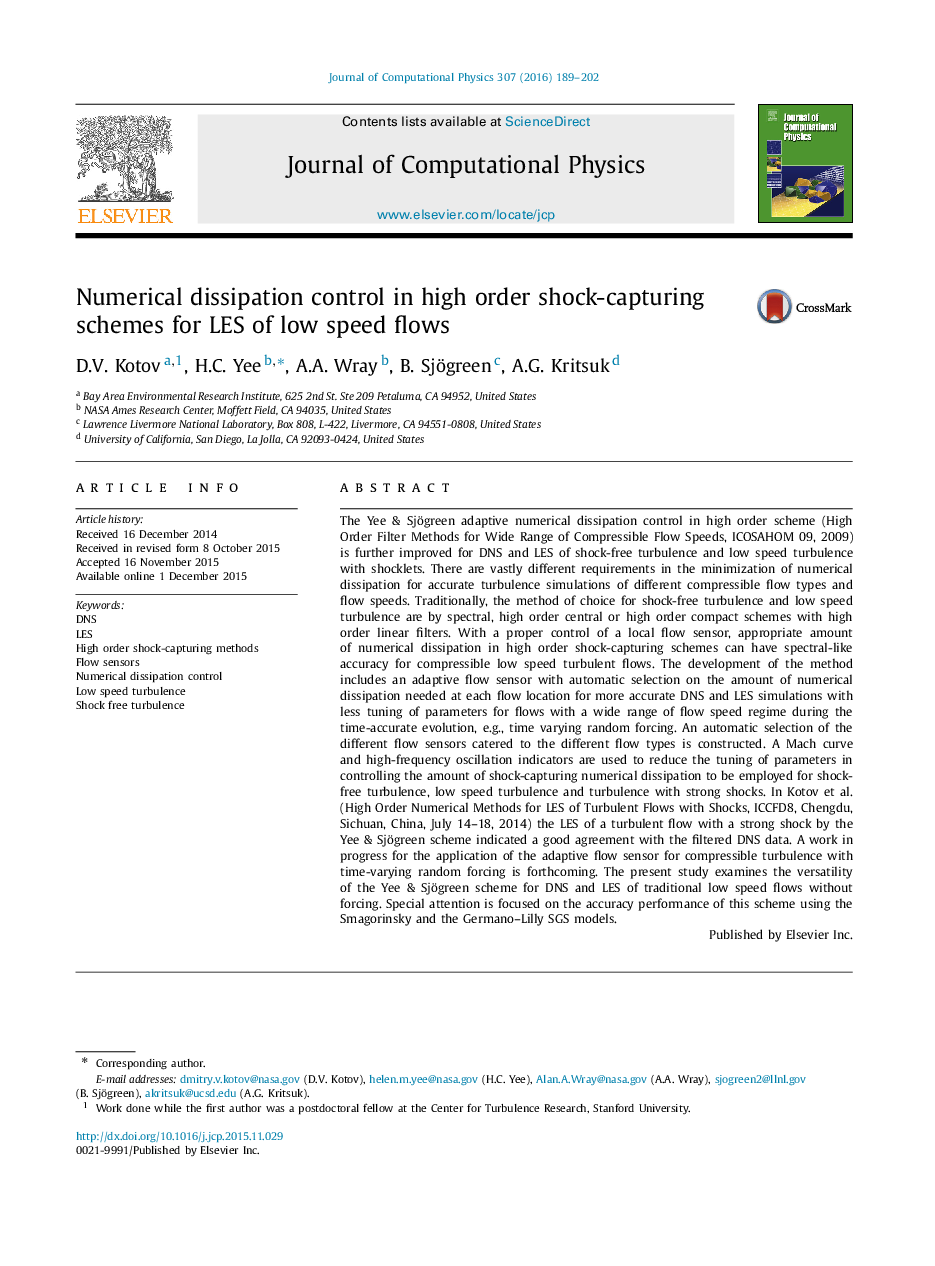| Article ID | Journal | Published Year | Pages | File Type |
|---|---|---|---|---|
| 6930653 | Journal of Computational Physics | 2016 | 14 Pages |
Abstract
The Yee & Sjögreen adaptive numerical dissipation control in high order scheme (High Order Filter Methods for Wide Range of Compressible Flow Speeds, ICOSAHOM 09, 2009) is further improved for DNS and LES of shock-free turbulence and low speed turbulence with shocklets. There are vastly different requirements in the minimization of numerical dissipation for accurate turbulence simulations of different compressible flow types and flow speeds. Traditionally, the method of choice for shock-free turbulence and low speed turbulence are by spectral, high order central or high order compact schemes with high order linear filters. With a proper control of a local flow sensor, appropriate amount of numerical dissipation in high order shock-capturing schemes can have spectral-like accuracy for compressible low speed turbulent flows. The development of the method includes an adaptive flow sensor with automatic selection on the amount of numerical dissipation needed at each flow location for more accurate DNS and LES simulations with less tuning of parameters for flows with a wide range of flow speed regime during the time-accurate evolution, e.g., time varying random forcing. An automatic selection of the different flow sensors catered to the different flow types is constructed. A Mach curve and high-frequency oscillation indicators are used to reduce the tuning of parameters in controlling the amount of shock-capturing numerical dissipation to be employed for shock-free turbulence, low speed turbulence and turbulence with strong shocks. In Kotov et al. (High Order Numerical Methods for LES of Turbulent Flows with Shocks, ICCFD8, Chengdu, Sichuan, China, July 14-18, 2014) the LES of a turbulent flow with a strong shock by the Yee & Sjögreen scheme indicated a good agreement with the filtered DNS data. A work in progress for the application of the adaptive flow sensor for compressible turbulence with time-varying random forcing is forthcoming. The present study examines the versatility of the Yee & Sjögreen scheme for DNS and LES of traditional low speed flows without forcing. Special attention is focused on the accuracy performance of this scheme using the Smagorinsky and the Germano-Lilly SGS models.
Keywords
Related Topics
Physical Sciences and Engineering
Computer Science
Computer Science Applications
Authors
D.V. Kotov, H.C. Yee, A.A. Wray, B. Sjögreen, A.G. Kritsuk,
